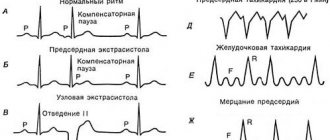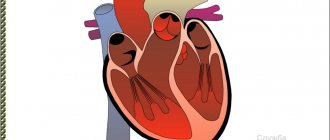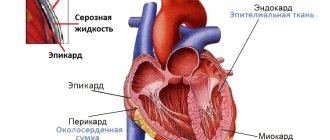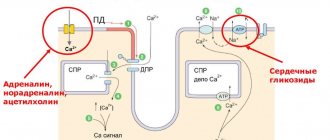The influence of bradycardia on the health of a person of military age
The list of diseases that exempt you from military service is regulated by Art. 81. “Schedule of diseases” and includes cardiovascular pathologies. Bradycardia (bradyarrhythmia) is characterized by a reduction in heart rate and may be a reason for receiving a deferment.
The normal heart rate (HR) is considered to be 60–90 beats per minute. Such indicators ensure the normal functioning of the circulatory system in the body. With the development of pathology, the rhythm decreases to 40–50 beats, which means the formation of moderate or severe bradycardia.
The progression of the disease in the absence of timely treatment can lead to serious complications in the body:
- Poor blood circulation in the brain;
- Oxygen starvation;
- Loss of consciousness, convulsions;
- Impaired functionality of organs and other vital systems.
Bradycardia has a negative impact on the conscript’s health, since when the heart rate decreases, it is necessary to follow the established regime of exercise and rest. In case of severe development of the pathology, physical activity is contraindicated, which ensures the need to obtain a temporary deferment from the army.
Sinus bradycardia and service
Bradycardia is a decrease in heart rate. Normally, a healthy person's heart rate is 60-80 beats per minute. A decrease in these indicators is not considered confirmation of functional disorders in the heart: the heart rate may noticeably decrease due to general hypothermia or negative environmental influences.
A rare heart rate is observed in athletes. For physically active people, a slow heart rate is considered a physiological condition and is not an obstacle to military service. Identifying such bradycardia is quite simple. This condition is not accompanied by general weakness and dizziness. In addition, it does not serve as a restriction on physical activity. At the same time, heart rate indicators do not drop below 50 beats per minute.
If we are talking about a pathological version of bradycardia, then this symptom serves as a manifestation of the disease. This condition can manifest itself as sudden attacks combined with weakness, heart pain and dizziness. The main causes of this variant of bradycardia include:
- vegetative-vascular or neurocirculatory dystonia;
- acute and chronic forms of cardiac pathology: myocarditis, myocardial infarction, cardiomyopathy and sick sinus syndrome;
- brain pathology: head injury, meningitis, meningoencephalitis and neoplasms;
- bad habits: alcoholism, smoking and drug addiction;
- general intoxication of the body with lead, various chemicals (occupational hazards);
- infectious processes: boils, abscesses, septic condition, intestinal infections, pneumonia;
- neoplasms of the neck and chest cavity;
- uncontrolled use of medications that help reduce heart rate: verapamil, amiodarone, asparkam;
- endocrine pathology: hypothyroidism, hypocortisolism;
- liver and kidney failure.
Read also: Neurocirculatory dystonia ICD 10
The receipt of a military ID for young men of conscription age with a diagnosis of sinus bradycardia is considered a controversial issue. A decrease in heart rate is not an indication for prescribing therapeutic measures. The rare rhythm does not affect physical activity and does not need correction. That is why, with moderate bradyarrhythmia, people are drafted into the armed forces.
If the heart rate drops to 30-40 beats per minute, then we are talking about the severity of the pathological process. The patient complains of general weakness, dizziness, heart pain and fainting. With a rare heartbeat, all internal organs and systems suffer from oxygen starvation. Such conditions require the intervention of specialists, as they can cause heart failure. In severe cases, the patient is advised to have a pacemaker installed to regulate cardiac activity.
The conscript has bradycardia
Identifying bradycardia in a young man of military age and receiving a deferment or exemption from the army largely depends on the severity of the pathology. The disease is classified into 2 types:
- Congenital bradycardia of physiological origin, which occurs under certain conditions (relaxation of the body during sleep, reaction to cold). The normal limit is considered to be a decrease in heart rate during sports that does not affect the general well-being of a person;
- Acquired bradycardia, which occurs against the background of progression of cardiovascular and infectious diseases (myocarditis, hepatitis, endocarditis, sepsis), toxic poisoning, hormonal imbalance and taking certain medications.
With the development of bradycardia, the patient may develop negative symptoms in the form of weakness, dizziness, chills, increased fatigue, pain in the heart, which is an indication for a deferment from military service.
After conducting the necessary examinations, doctors determine the fitness category according to 4 functional classes:
- During the first class, the conscript feels well and does not feel changes during physical activity, therefore he is fit for service;
- The second class determines the presence of shortness of breath and fatigue when performing physical exercises, so it is assigned category “B” (limited fitness);
- In the third class, minor physical activity leads to fatigue and shortness of breath, characterized by progression of the pathology. In this case, category “D” is assigned;
- The occurrence of weakness even at rest determines the fourth class of disease development, in which the young man is completely exempt from military service.
If the examination reveals moderate bradycardia, then the conscript can serve in the army, since this condition does not cause concern for his health.
Organic, intracardial bradycardia
Pathological changes in the structures of the heart can directly or indirectly disrupt the functions of the sinus node itself (pacemaker) or lead to blockades of the conduction system. The greatest danger is represented by diseases accompanied by the formation of scars:
- Myocardial infarction;
- Myocardial dystrophy;
- Myocarditis;
- Cardiosclerosis.
According to the mechanism of formation of the abnormal rhythm, sinus and non-sinus bradycardia are distinguished.
Sinus bradycardia is once a consequence of weakness of the sinus node. In this case, impulses are generated less frequently than usual. The normal rhythm of heart contractions is maintained. In some cases, failure of the sinus node functions is possible.
Heart blockades. Blockades mean disturbances in the conduction of impulses from the pacemaker to the atria (sinoatrial block) or from the atria to the ventricles (atrioventricular block). Moreover, blockades can be incomplete or complete. In a state of complete blockade, a mismatch of ventricular contractions occurs.
Diagnosed heart pathologies accompanied by persistent rhythm disturbances are incompatible with military service.
Is it possible to get a deferment?
The severe course of the pathology is determined even before passing a medical examination at the military registration and enlistment office. Moreover, if suspicious symptoms appear, then diagnosis and the necessary examinations are required.
The diagnosis of bradycardia may be the cause of the development of other diseases in the body:
- Stomach ulcer;
- Neurosis;
- Development of tumors;
- Brain dysfunction;
- Vegetovascular dystonia.
Complete exemption from the army is granted in the presence of sick sinus syndrome and atrioventricular heart block, and the need to install an electrical stimulator.
Category “G” (obtaining a temporary deferment) is possible in the following cases:
- The development of the disease is provoked by taking a medication. Treatment is based on monitoring medication intake and eliminating the irritant;
- Heart rhythm disturbances occurred against the background of intoxication of the body and the development of cardiac pathologies. A recovery period and subsequent re-examination are prescribed.
Diagnostics
Asymptomatic bradycardia is often detected accidentally during examination of the patient. An indirect sign of possible heart rhythm disturbances are complaints of fatigue and frequent dizziness.
To confirm the diagnosis and clarify the genesis of heart rhythm disturbances, the following are indicated:
ECG. When analyzing the results, a decrease in heart rate and heart block is recorded or refuted. If the results of a one-time examination are not informative enough, the patient is admitted to the hospital for daily ECG monitoring.
Ultrasound of the heart. It is carried out when the presence of cardiac pathologies is suspected and to identify the dynamics of already diagnosed heart diseases. Allows you to record a significant decrease in cardiac output, as well as cicatricial changes in the myocardium.
CHPEFI. A transesophageal electrophysiological study is performed to assess the functioning of the cardiac conduction system in cases of suspected heart block that is not confirmed by an ECG.
If a conscript is found to have bradycardia, whether he or she will be accepted into the army is decided based on the results of the examination, depending on the identified diseases.
Which units are admitted to with a diagnosis of bradycardia?
When assigned to category “A” (a conscript is fully prepared for health reasons), a citizen can be assigned to the airborne assault, airborne troops, or marine corps.
The presence of cardiac pathologies implies assignment to category “B” (limitation of physical activity in the service), in which the conscript is assigned to the following units:
- Tank and missile forces;
- Airborne Forces;
- Ministry of Internal Affairs;
- Artillery and others.
Who decides the question of suitability for service?
In order to create a strong and capable army, young people without health problems must be registered with the military, therefore, when issuing a ticket, the appropriate fitness categories are assigned.
During military registration, the military registration and enlistment office has a special commission that studies the results of the examination and makes a decision on assigning the appropriate fitness category.
In most cases, young people start studying at the age of 18, so upon graduation they will need to be re-examined. The assignment of a category is based on Art. 81. "schedule of illnesses".
Making an accurate diagnosis determines the conscript’s condition, and the commission, based on the data received, makes its decision, which is based on studying the items presented in the list of diseases.
Preparing for the examination
In order to undergo an examination and obtain an accurate diagnosis, you must first carry out preparatory measures. In this case, it is necessary to collect the relevant documents, go to the hospital in a timely manner, undergo examination and treatment if the need arises.
Obtaining an exemption from military service with negative symptoms of bradycardia requires making an accurate diagnosis and identifying the cause of the pathology, which may be an indication for assigning a category of unfitness.
Confirmation at the military registration and enlistment office: Holter
When diagnosing bradycardia, the military registration and enlistment office may order additional research in the selected department of the hospital. To determine the disease, the following measures are prescribed:
- Holter monitoring;
- Veloergotomy;
- ECG.
Identifying the cause of bradycardia involves prescribing the following studies:
- General blood analysis;
- Ultrasound of the kidneys, liver, thyroid gland.
Cardiac pathologies are excluded using the following methods:
- Echokg;
- Six-minute walking test;
- Treadmill testing on a treadmill.
All examinations are carried out free of charge in accordance with the law “On Military Duty and Military Service”.
Exceptional cases
The occurrence of any diseases during a medical examination at the military registration and enlistment office implies the formation of exceptional situations when the pathology is not indicated in the list, but is an indication for obtaining a temporary deferment.
Such an example is the diagnosis of sinus bradycardia, since this disease can cause more serious pathologies that require assignment to category “B”, “G” or “D”. If controversial issues arise, the decision of the military registration and enlistment office can be appealed in court.
Are they allowed into the army with bradycardia in the Republic of Belarus?
The diagnosis of bradycardia during military service in the Republic of Belarus is also a relative concept for obtaining a temporary deferment. Here, a lot depends on the reason that caused the decrease in heart rate.
Establishing an accurate diagnosis is carried out by undergoing a full examination and identifying all the features of the pathology. If, as the disease progresses, the general symptoms worsen significantly, the commission may grant a temporary deferment or complete exemption from the army.
Bradycardia of extracardiac origin
Develops as one of the symptoms of diseases and other pathological conditions not associated with direct damage to the structures of the heart. Among them:
- Organic brain lesions, including tumors, traumatic brain injuries, meningitis;
- Vegetative-vascular dystonia, neurocirculatory dystonia;
- Mechanical compression of the carotid artery;
- Tumors in the mediastinum;
- Neuroses;
- Renal colic;
- Peptic ulcer of the stomach or duodenum;
- Myxedema;
- Meniere's syndrome;
- Unbalanced diets.
Since bradycardia is not an independent disease, a conscript with heart rhythm disturbances undergoes additional examination to identify the underlying pathology. If brain damage, cancer, thyroid dysfunction, or peptic ulcer disease are detected, military service is contraindicated.
Reviews
Reviews about the presence of bradycardia and simultaneous military service have different responses, since the assignment of a category for such a diagnosis completely depends on the individual circumstances of each individual case.
When I underwent a medical examination, moderate bradycardia was detected. At the same time, I served in the army, and no negative symptoms arose. So it's really all individual.
Evgeniy, Murmansk
I was also diagnosed with bradycardia, so they gave me a temporary deferment for recovery. After re-examination, he was drafted into the army, and served in the Airborne Forces for a year without any consequences.
Andrey, Rostov-on-Don
Other types of bradycardia
A slowdown in heart rate can develop due to the use of cardiac drugs, namely, adrenergic blockers, calcium channel blockers, cardiac glycosides, and antiarrhythmic drugs. Drug-induced bradycardia itself does not affect suitability for service and resolves spontaneously after discontinuation of the drug or adjustment of its dosage. The decision is made on an individual basis, depending on the type of underlying pathology and its severity.
Heart rhythm disturbances can accompany extreme degrees of intoxication that develop against the background of infectious diseases, impaired liver or kidney function, as well as poisoning with lead and phosphorus compounds. The suitability of a conscript for combat service is determined depending on the genesis of intoxication in each specific case.
Symptoms of bradycardia
Mild and moderate bradycardia do not lead to significant changes in hemodynamics and are therefore asymptomatic. Reducing heart rate to 40 beats per minute or less is possible:
- Difficulty breathing;
- Feelings of fatigue, weakness;
- Dizziness;
- Semi-fainting and loss of consciousness;
- Sudden change in blood pressure;
- Vague discomfort or pain in the heart area;
- Disorders of memory and attention processes;
- Confused thinking;
- Dyspnea.
Against the background of a decrease in heart rate, decreased endurance and increased fatigue are possible due to chronic circulatory failure. Such disorders do not respond well to conservative treatment.
Changes in blood pressure caused by abnormal heart rhythms are also difficult to treat.
Particularly dangerous is Morgagni-Adams-Stokes syndrome, which is accompanied by panic attacks, severe dizziness and loss of consciousness. In this case, spontaneous restoration of the heart rhythm is possible, but prolonged fainting poses a potential threat to the patient’s life and is an indication for emergency hospitalization.










